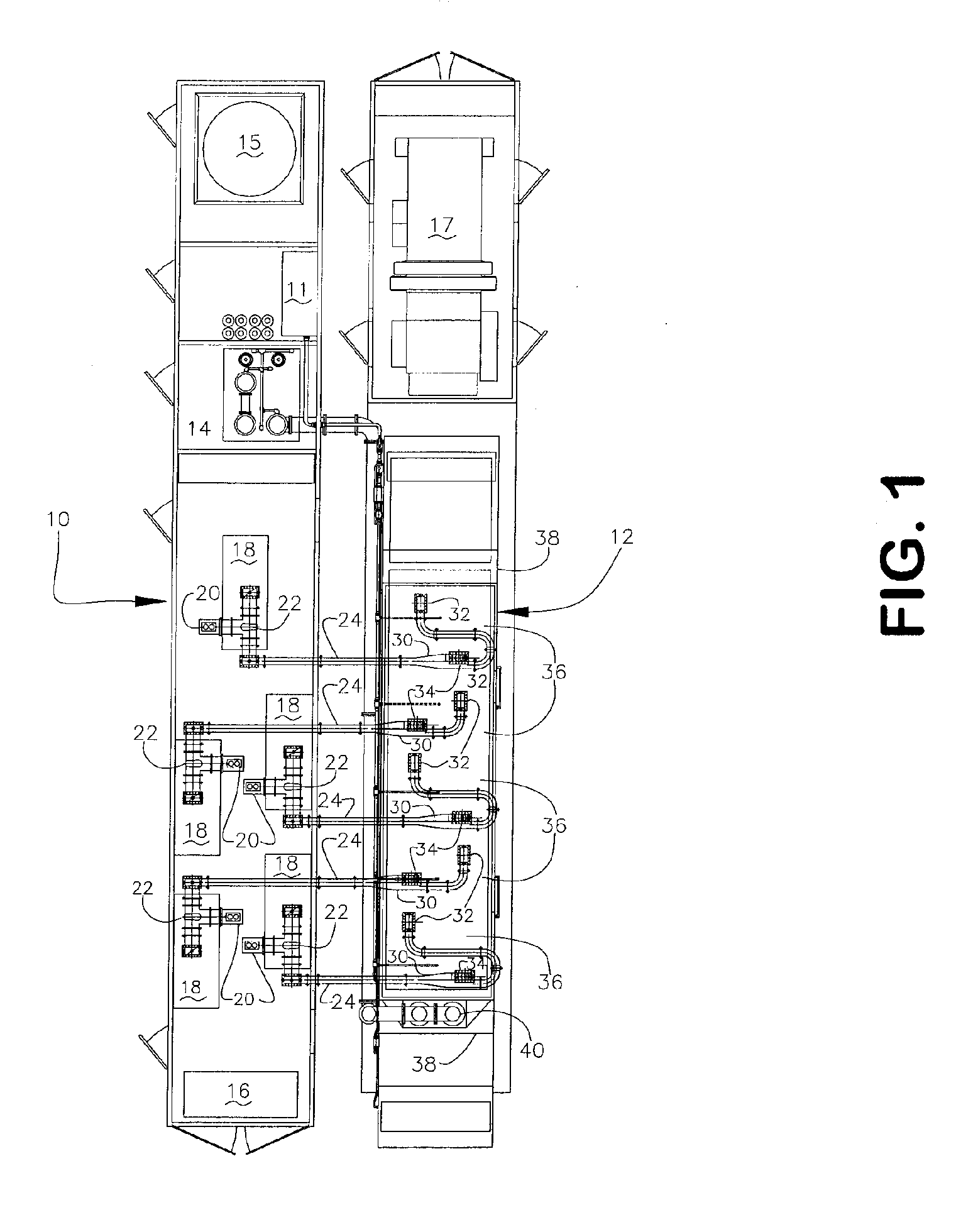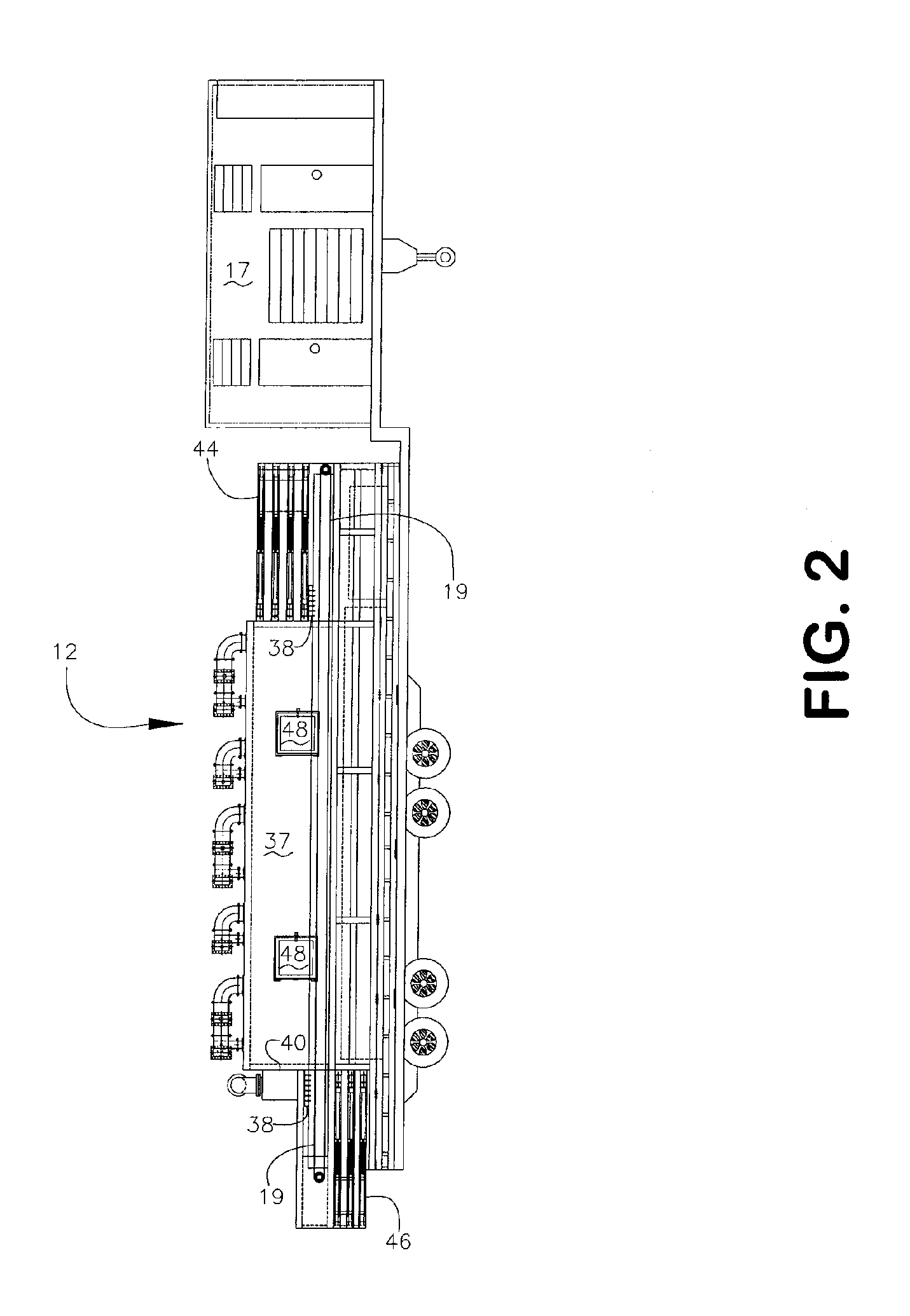Method and apparatus for microwave reduction of organic compounds
a technology of organic compounds and microwaves, applied in chemical/physical/physical-chemical processes, electrical coke oven heating, chemical/physical processes, etc., can solve the problems of increasing the difficulty of refurbishing and replacing costs of these plants, and the cost of energy and capital equipment costs
- Summary
- Abstract
- Description
- Claims
- Application Information
AI Technical Summary
Benefits of technology
Problems solved by technology
Method used
Image
Examples
Embodiment Construction
embly;
[0014]FIG. 6 is a side plan (elevation view) of the outfeed assembly;
[0015]FIG. 7 is a graph illustrating applied microwave power in kilowatts vs. throughput of scrap tires per day;
[0016]FIG. 8 is a graph illustrating by-products recovered from scrap tires vs. applied microwave power in kilowatts;
[0017]FIG. 9 is a graph illustrating the thermal energy recovered from scrap tire by-products, at an applied microwave power, as illustrated in FIG. 7; and
[0018]FIG. 10 is a graph illustrating the equivalent electrical power produced from the thermal energy illustrated in FIG. 7 by an Internal Combustion Gas Turbine (ICGT), operating in simple cycle mode, at a combustion efficiency of only 35%.
DETAILED DESCRIPTION OF THE INVENTION
[0019]The best mode for carrying out the invention will now be described for the purposes of illustrating the best mode known to the applicant at the time of the filing of this patent application. The examples and figures are illustrative only and not meant t...
PUM
| Property | Measurement | Unit |
|---|---|---|
| frequency | aaaaa | aaaaa |
| frequency | aaaaa | aaaaa |
| weight percent | aaaaa | aaaaa |
Abstract
Description
Claims
Application Information
 Login to View More
Login to View More - R&D
- Intellectual Property
- Life Sciences
- Materials
- Tech Scout
- Unparalleled Data Quality
- Higher Quality Content
- 60% Fewer Hallucinations
Browse by: Latest US Patents, China's latest patents, Technical Efficacy Thesaurus, Application Domain, Technology Topic, Popular Technical Reports.
© 2025 PatSnap. All rights reserved.Legal|Privacy policy|Modern Slavery Act Transparency Statement|Sitemap|About US| Contact US: help@patsnap.com



